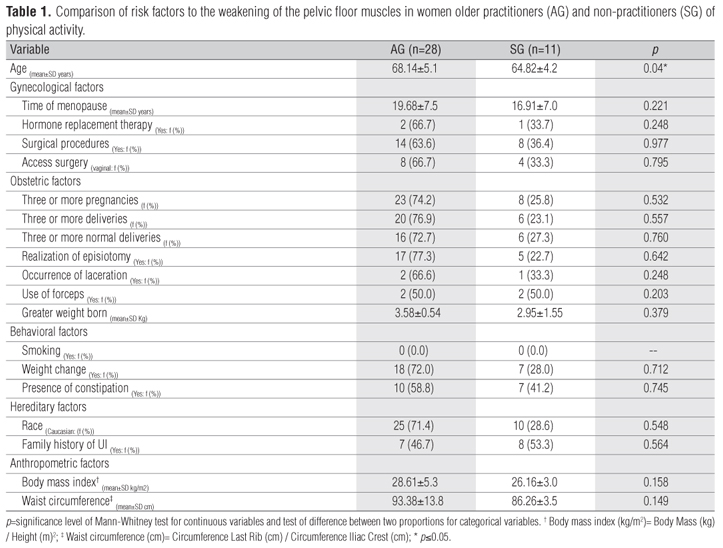OBJECTIVE: To identify the presence of urinary incontinence and compare perineal muscle function among physically active and sedentary older women. METHODS: The sample consisted of 39 elderly women, 28 of whom got regular physical activity (AG) and 11 did not (SG). We collected data on risk factors for pelvic floor weakness and the presence of urinary incontinence (UI). The evaluation of perineal function was performed using PERFECT and perineometry. The data were processed with descriptive (simple frequencies, percentages, measures of position and dispersion) and inferential statistics (Chi-square or Fisher Exact Test, when necessary, and Mann-Whitney) with a significance level of 5%. RESULTS: There was a higher mean age (p=0.04) in AG. The occurrence of UI in the sample was 56.4%. Urge UI was associated with SG (p=0.022). All PERFECT variables were higher in AG than SG, with significant differences for the variables "repetitions" (p=0.008) and "fast" (p=0.022). Perineometry revealed that fast twitch fibers (p=0.008) and slow twitch fibers (p=0.05) were higher in the AG. CONCLUSION: AG had better pelvic floor muscle function. However, the prevalence of UI was higher in this group, which suggested the influence of age on the urinary continence mechanism.
pelvic floor; perineum; muscle strength; urinary incontinence; physical activity; elderly



